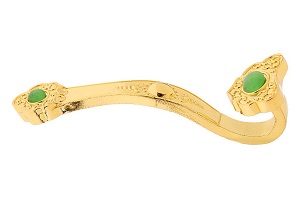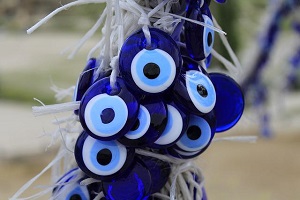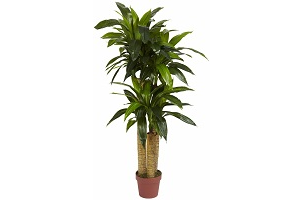The Ru Yi (如意) is an artifact that is unique to Chinese tradition. These two words can also be translated as “as you wish”.
Nowhere else in the world has something like this in it’s history and culture. The closest resemblance to it is the scepter.
There is no clear and obvious practical uses for the ru yi except as a totem.

Sort of like the pace sticks Regimental Sergeant Major carry during parades or the batons musical conductors used in concerts. They are not absolutely necessary and can be easily replaced by something else while the show goes on.
They are authoritative and status symbols. It’s no coincidence that great leaders of power and influence had yielded them in history.
This object has a somewhat S-shaped body and often made of bamboo, jade or bone. It’s head has a deeper curve that makes the item aesthetically pleasing.
Some researchers attribute the design of the ru yi as being inspired somewhat by lingzhi mushrooms, fungus or bats.
It is said that the curved legs and armrests designed on furniture originate from the curved head of the ru yi.
Folklore also suggest that the ru yi was conceptualized from the traditional backscratcher or scepter… or somewhere in between.
In ancient China, the ru yi was bestowed onto important people by the emperor. In return, royal subjects at the highest level would present the ruyi to the emperor as gifts on important events.
For example, historical records tell of Emperor Qian Long receiving 60 ruyi made of gold from his ministers on his 60th birthday.
However, unlike thing that are reserved only for royalty such as magnolias, the ru yi don’t enjoy such exclusivity status.
So they are also celebratory and business gifts used by the rich.
This is hardly surprising as Lu who is one of the three members of San Xing carries one as a personal emblem. So does the laughing buddha from time to time. They are both considered as a god of wealth in their own right.
The god of literature (文昌) is also often depicted holding a ruyi.
So loved is the ru yi that a special knot was named after it.
A popular Chinese phrase Wan Shi Ru Yi (万事如意) also adopted the words to mean well wishes, having dreams fulfilled, and basically good luck with everything in life.
Ru yis are also often depicted in auspicious Chinese paintings.
Even various paintings without the sceptor as the focal object still has it’s distinctive shape along the border patterns. They are also sometimes illustrated as flowering vines too.
An elephant carrying a child with a ru yi on it’s back is said to represent well wishes for good luck and smooth sailing in life with little obstacles.
When a ru yi is placed in a vase, carries a meaning or peace and harmony. This is a wordplay as the mandarin word for vase is ping (瓶) which sounds a lot like 平 which means peace and safety.
A painting of the lotus, box and mushroom shaped like a ruyi is said to carry the meaning of union and wish fulfillment. This is a play of the phrase 和合如意.
The lotus with the ru yi represents wishes coming true year after year.
Paired with the goldfish, it means an overflowing accumulation of wealth.
When accompanied by persimmons in drawings, it symbolizes that everything will turn out fine and that there’s nothing to worry about.
Gold ingots with the scepter represents “according to your wishes for sure”. The same can be said when it is depicted with a calligraphy brush and ingots.
In ancient records, 3 ru yis made out of bamboo, wood and iron were referred to as paw sticks. This is a reference to 3 different ruyis that were bestowed to revered characters.
This special scepter is also among a group of magical items known as the seven treasures (七宝).
Thousands of ruyi have been discovered in archaeological expeditions. They are mostly put on display in museums all over China.
Placement of Ru Yi
As mentioned earlier, the ru yi is a symbol of status and very appropriate as gifts.
Whether as a display item or painting, they are best place in the south as that is area that governs recognition luck.
Locating one in the north can help one to gain more authority in his or her career.
It would also be very suitable area where the 9 star resides as a facing or sitting star in flying star feng shui.
It would also be appropriate for Sheng Chi and Fu Wei locations according to 8 mansions feng shui.
If you are unable to place the ru yi at the places listed above, then the best alternative is to put them in any of the wealth locations you are able to determine.
A lot of people like to place sabres, swords or daggers on display, especially at office, to send a signal to other that they mean business.
The ru yi is a good alternative without the bloodshed.
It is also suitable for households where parents want to keep rebellious children under control and avoid bad behavior.
Many people also choose to carry one around as a personal emblem via key chains.
Whatever you do, do not give one to someone who is not ready for bigger responsibility.
For example, giving one to your child when he is barely out of high school. This can cause him or her to be disrespectful towards elders, including you.















